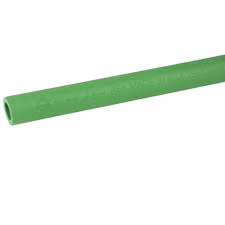Aug . 13, 2024 10:56 Back to list
Exploring Transition Couplings for HDPE to PVC Connections in Pipe Systems and Applications
Understanding HDPE to PVC Transition Coupling Products
In the realm of piping systems, efficient and effective material transitions are crucial for ensuring overall system integrity and function. One such important transition is between High-Density Polyethylene (HDPE) and Polyvinyl Chloride (PVC). The coupling products that facilitate this transition play a pivotal role in a wide array of applications, from water supply systems to industrial piping networks.
What Are Transition Couplings?
Transition couplings are specialized fittings designed to connect dissimilar materials, in this case, HDPE and PVC. These couplings enable a secure and reliable joint that can withstand the operational pressures and environmental conditions of the installation. Given the distinct properties of HDPE and PVC, such couplings must be engineered to compensate for differences in thermal expansion, chemical resistance, and mechanical strength.
Properties of HDPE and PVC
HDPE is known for its high strength-to-density ratio, excellent impact resistance, and low permeability. This makes it an ideal choice for applications involving water and gas distribution, as well as underground piping systems where durability is paramount.
In contrast, PVC is a widely used plastic in construction and plumbing due to its excellent chemical resistance, easy installation, and low cost. PVC’s rigidity and smooth internal surface contribute to its effectiveness in wastewater management and drainage systems.
While both materials have distinct advantages, their differences necessitate the use of transition couplings to ensure a seamless connection between them
.Importance of Transition Couplings
hdpe to pvc transition coupling products

The introduction of transition couplings allows engineers and contractors to utilize the benefits of both HDPE and PVC in a single piping system. For instance, in situations where HDPE is preferred for its durability in underground installations, but PVC is required for above-ground sections due to its ease of handling and cost-effectiveness, couplings provide a solution.
These fittings are engineered to ensure that flow rates remain consistent while preventing leaks and maintaining the structural integrity of the system. Moreover, the transition fittings are often designed to accommodate the different flexibilities and thermal expansion rates of HDPE and PVC.
Installation Considerations
When installing transition couplings, it is vital to adhere to manufacturer guidelines and recommendations for both materials. The joining surfaces must be clean and free of contaminants, and proper torque specifications should be followed to avoid potential failure points.
In addition to physical installation practices, understanding the environmental conditions where the piping will be laid is crucial. Factors such as temperature fluctuations, soil chemistry, and potential chemical exposure can influence the longevity and effectiveness of the HDPE-PVC junction.
Conclusion
Transition couplings between HDPE and PVC are essential components in modern piping systems, allowing for the integration of two highly effective materials. By understanding the specific properties and requirements of these materials, engineers can choose the appropriate types of couplings that will ensure durability, reliability, and overall system performance.
As infrastructure continues to evolve, the ability to seamlessly transition between materials like HDPE and PVC will remain a key factor in the construction of efficient and sustainable piping systems, ultimately contributing to enhanced service delivery in water management, waste disposal, and other critical applications.
-
High-Quality PVC Borehole Pipes Durable & Versatile Pipe Solutions
NewsJul.08,2025
-
High-Quality PVC Perforated Pipes for Efficient Drainage Leading Manufacturers & Factories
NewsJul.08,2025
-
High-Quality PVC Borehole Pipes Durable Pipe Solutions by Leading Manufacturer
NewsJul.08,2025
-
High-Quality PVC Borehole Pipes Reliable PVC Pipe Manufacturer Solutions
NewsJul.07,2025
-
High-Quality UPVC Drain Pipes Durable HDPE & Drain Pipe Solutions
NewsJul.07,2025
-
High-Quality Conduit Pipes & HDPE Conduit Fittings Manufacturer Reliable Factory Supply
NewsJul.06,2025

